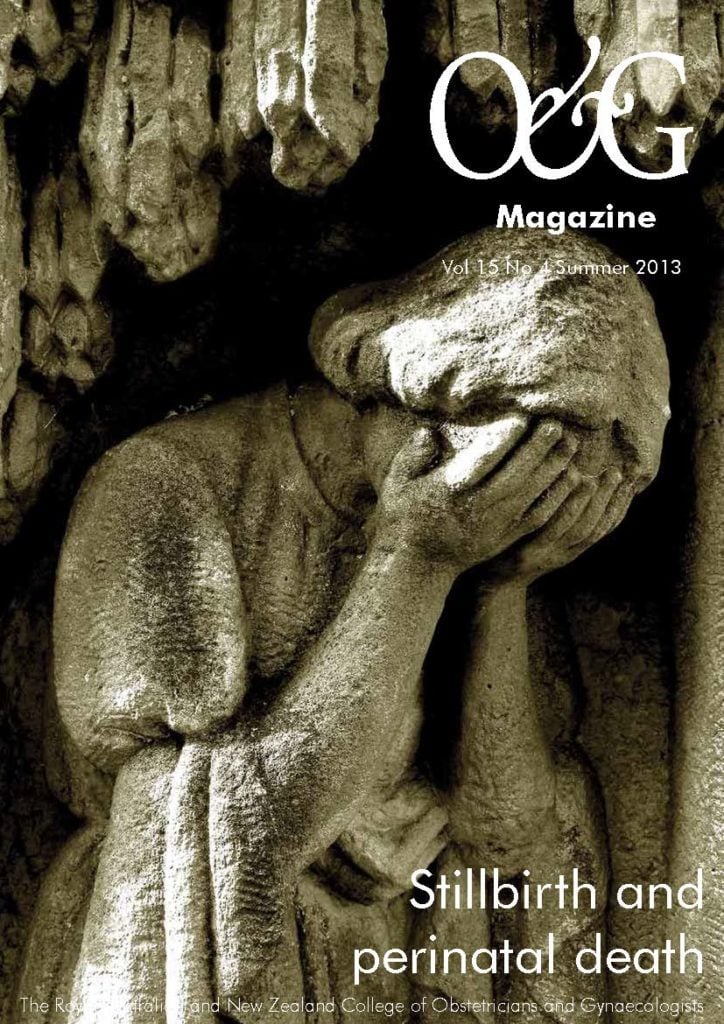For the broader O&G Magazine readership, balanced answers to those curly-yet-common questions in obstetrics and gynaecology.
A 34-year-old primiparous teacher presents to the maternity unit at 29 weeks gestation with a 36-hour history of diarrhoea, vomiting and crampy abdominal pain. She has a temperature of 37.5C, a heart rate of 110 and a BP of 95/60. The cardiotocograph shows a baseline of 165bpm, with normal variability and reactivity and no decelerations. There is no evidence of contractions. Her husband has similar symptoms. How should her care be managed?
Infectious gastroenteritis is a common condition during pregnancy that, in most cases, has a benign outcome. However, it provokes unpleasant symptoms and maternal concern regarding fetal wellbeing.
History should include symptoms such as blood or mucus in the stool, frequency and volume of diarrhoea and/or vomiting, fever, pain and oliguria. The ability to tolerate oral intake and contact with other infected people as well as contact with contaminated foods or water should be ascertained. Women should also be questioned regarding signs of preterm labour and fetal wellbeing, including fetal movements, uterine activity and vaginal loss.
Clinical assessment includes evaluation of the degree of dehydration, presence of abdominal signs suggesting an acute abdomen and signs of premature labour. Urinalysis for signs of dehydration, proteinuria or urinary tract infection should be performed.
Stool specimens are recommended to be collected in pregnant women with gastroenteritis, particularly if symptoms have been present for longer than 72 hours.1 Urea and electrolytes may be performed to assess renal function and dehydration, while liver function tests and a full blood count may be ordered if the diagnosis of simple infectious gastroenteritis is unclear. Blood cultures are required if listeriosis is suspected.
At 29 weeks gestation the considerations with gastroenteritis in pregnancy involve both the mother and the fetus. Gastroenteritis can cause uterine irritability and in some cases threatened labour although preterm delivery is uncommon. Mild contractions often settle with treatment of maternal symptoms. A cardiotocograph will assess both uterine activity and fetal heart rate. It would be expected that the mild fetal tachycardia seen in this case would resolve with maternal rehydration.
In most cases, treatment of gastroenteritis in pregnancy primarily involves rehydration. In many women this can be achieved on an ambulatory basis, either with oral rehydration or with a short admission for intravenous fluids. Hospital admission may be required of women are unable to tolerate oral rehydration, are otherwise systemically unwell or there is evidence of fetal distress or preterm labour. In severely dehydrated women, normal saline or Hartman’s solution are preferred over five per cent dextrose or hypertonic saline to avoid severe neurological complications such as Wernicke’s encephalopathy or central pontine demyelination. Loperamide, often used to alleviate diarrhoea in non-pregnant patients, is a Category B3 drug and not recommended to be used in pregnant women. If admission is required then suitable infection-control measures should be used to prevent infection of staff and other patients.
Antibiotic therapy if required should be guided by results of microbiology or other evidence of likely causative organisms. Azithromycin can be considered for empirical treatment of traveller’s diarrhoea.2 Giardiasis may be seen in pregnant women, particularly those who have ingested water contaminated by animal or human faeces. Recommendations are mixed on treatment of giardiasis in pregnancy. If treatment is necessary then metronidazole may be considered after the first trimester.1
While most infectious gastroenteritis in pregnancy has no long-term adverse effect on the mother or fetus, Listeria monocytogenes infection is more serious. Listeriosis may present with nausea and vomiting in pregnancy, often associated with a fever and flu-like symptoms. Maternal listeriosis has a high rate of fetal loss with a fetal mortality of 40–50 per cent if contracted in the second and third trimesters.3 Diagnosis is by maternal blood cultures, cerebrospinal fluid or amniotic fluid cultures. Treatment of serious infection is with intravenous amoxicillin/ampicillin and gentamicin, or oral amoxicillin/ampicillin for less serious cases. Neonatal listeriosis can present as fever, respiratory distress, neurological symptoms or with a skin rash. Some infants may present with granulomatosis infantisepticum with disseminated granulomas in the lung, skin, liver and other locations. Mortality rates for infected neonates can be as high as 50 per cent and prompt diagnosis and treatment is vital.
References
- Fagan EA. 2002. Disorders of the gastrointestinal tract. In de Swiet M. Medical disorders in Obstetric Practice 4th Edition. Blackwell. pp346-385.
- Yates J. 2005. Traveler’s diarrhea. American Family Physician, 11: 2095-2100.
- Voss L. 2002. Listeriosis. In Palasanthiran P, Starr M and Jones C. Management of Perinatal Infections. Australasian Society for Infectious Diseases. pp 24-26.






Ty this helps 😊.
[…] Q&a: How should we manage gastroenteritis in pregnancy? – O&G Magazine – https://www.ogmagazine.org.au/15/4-15/qa-how-should-we-manage-gastroenteritis-in-pregnancy/ […]